Switzerland Cybersecurity Market Size
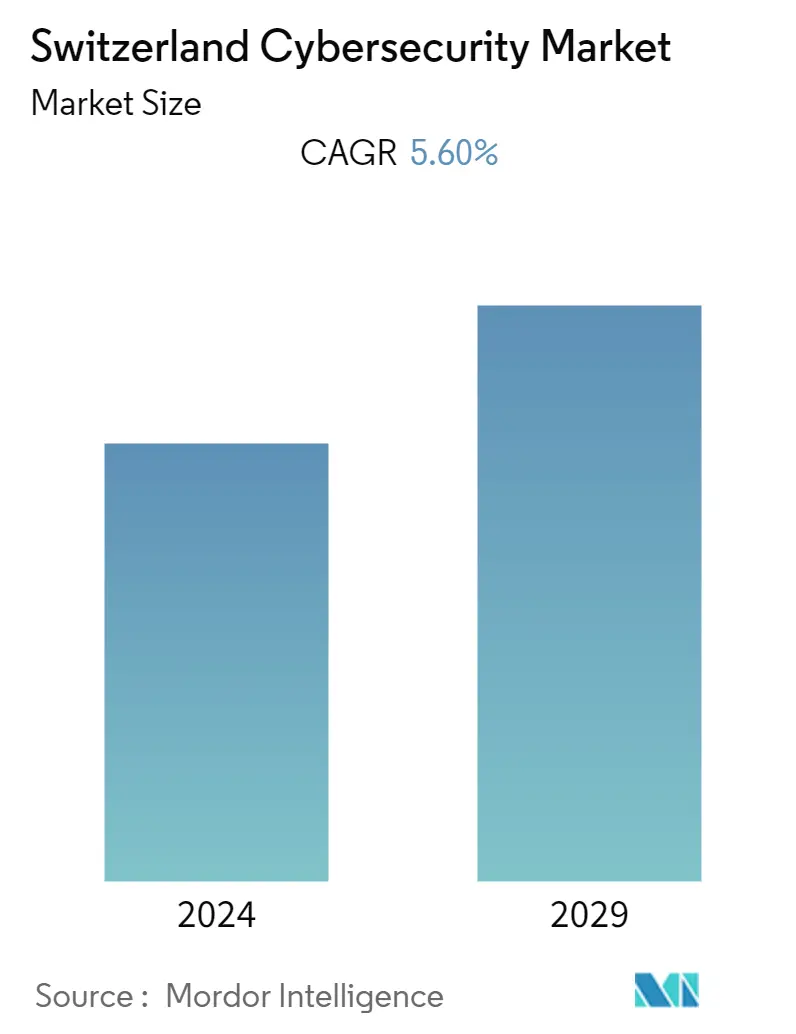
| Study Period | 2019 - 2029 |
| Base Year For Estimation | 2023 |
| Forecast Data Period | 2024 - 2029 |
| Historical Data Period | 2019 - 2022 |
| CAGR | 5.60 % |
| Market Concentration | Medium |
Major Players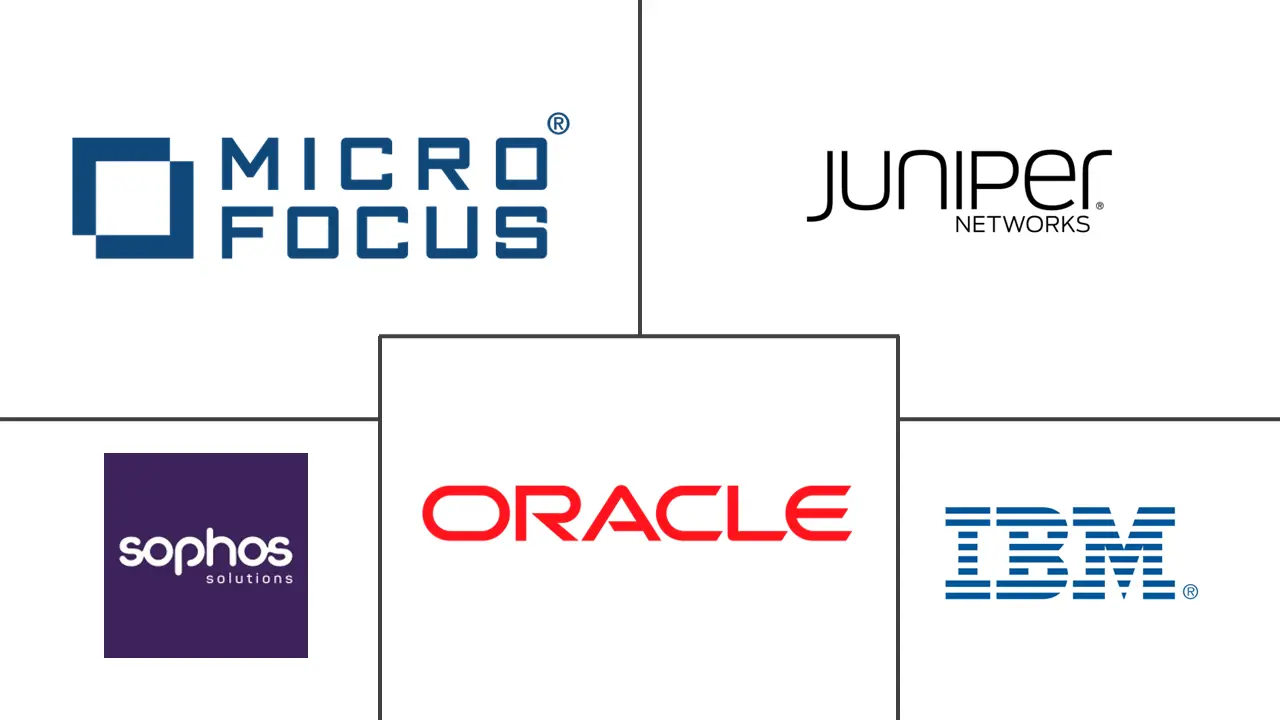
*Disclaimer: Major Players sorted in no particular order |
Switzerland Cybersecurity Market Analysis
The Switzerland Cybersecurity Market is anticipated to grow with a CAGR of 5.6% during the forecast period (2022 - 2027). Large business enterprises are implementing more data-based AI solutions for everything from security to sales, and cybersecurity experts have turned to geospatial data to shore up the lines of defense. Systems companies can strengthen emergency management, national intelligence, infrastructure protection, and national defense platforms by implementing geospatial data into pre-existing security.
- In keeping with its humanitarian heritage, Switzerland is actively advancing global cybersecurity and encouraging the responsible use of ICT. Numerous organizations, including the Internet Society, Internet Governance Forum (IGF), DiploFoundation, International Telecommunication Union (ITU), ICT-4Peace, and WEF Cyber Security Center, are based in the nation. The "Trust Valley," a center of excellence in digital trust and cybersecurity, was established by the Cantons of Vaud and Geneva to foster the creation of novel enterprises and build a unique environment.
- The service providers in the market are trying to offer a customized solution, either remotely or on-premise. These services include assistance at the time of solution integration, and data migration, among others. It also helps review the current architecture, use cases, and company goals, so the organization stays aligned with its current needs. Furthermore, professional services support various types of cybersecurity services to organizations, such as integration and maintenance of cybersecurity solutions, employee security training, and consulting, which include defining strategies, deployment of the right solution, augmentation in key areas, and elevated data protection strategies, among various others.
- Moreover, public and private banking institutions are concentrating on using the most recent technology to thwart cyber attacks as part of a strategy to safeguard their IT processes and systems, essential client data, and comply with regulatory requirements. Additionally, banking institutions are under pressure to adopt a proactive security posture due to increased client expectations, technology advancements, and regulatory obligations. With the increasing use of technology and digital channels like internet banking, mobile banking, etc., online banking has emerged as the customer's first choice for financial services. Banks must make extensive use of sophisticated authentication and access control procedures.
- In September 2022, The National Cyber Security Centre (NCSC) of Switzerland declared the beginning of a brand-new bug bounty program for the federal government. In a 2021 pilot project, six IT systems from the Swiss parliamentary services and the Federal Department of Foreign Affairs, FDFA, were examined for security flaws by ethical hackers. The project found ten vulnerabilities: one critical, seven medium, and two minor. As a result, several federal agencies were added to the program under the direction of the NCSC.
- The range of cyber threats has expanded due to the rise in remote connections and work from home. For instance, 76% of respondents to the IBM Security Report 2020 stated that working remotely would lengthen the time needed to detect and contain a potential data breach. It was shown that a remote workforce increased the average cost of a data breach from USD 3.86 million to USD 4 million, an increase of over USD 137,000.
Switzerland Cybersecurity Market Trends
This section covers the major market trends shaping the Switzerland Cybersecurity Market according to our research experts:
IT Sector will Observe a Significant Growth
- The key infrastructure of any nation includes significant sectors related to information technology and telecommunications, and many different industries depend on them to function. Therefore, its effects may be extensive and far-reaching if a cyber-attack targets the IT and telecommunications sectors. Even false alarms might force a corporation to stop providing vital services that clients and enterprises depend upon.
- Since the telecom industry touches almost all aspects of life alongside critical infrastructure, it could be prone to cyberattacks. Significantly, the industry builds and operates complex networks and stores massive amounts of sensitive data associated with individuals and corporate. Several reasons make this field more lucrative to malicious actors or hackers. Over the years, telecom devices' security vulnerabilities have increased dramatically, equipping a significant space of the threat landscape.
- Distributed Denial of Service (DDoS) attack is one of the most standard types of direct cyberattacks. It could make a machine or network resource unavailable to its intended users by indefinitely or temporarily disrupting services a host in connection with the Internet. These attacks can condense network capacity, swell traffic costs, disturb service availability, and even compromise internet access by hitting ISPs.
- Communication carriers are in the middle of technological evolution. Software-Defined Networks (SDNs) are transforming network management, and cloud computing helps telcos scale for growth. But with these opportunities come risks. Telcos often open themselves to cyber threats since they are responsible for constructing and operating crucial infrastructure needed to communicate and store sensitive data. Skilled hackers and government agencies deploy advanced persistent threats that could operate undetected. Communication channel components, such as edge devices, core network elements, and end-user services run on them, are often targeted.
- Opportunities for operators to reinvent their business models by launching cutting-edge digital services linked to IoT, 5G, e-commerce, data, content, OTT communications, mobile payments, or managed services are abounding in the telecom sector. The demand is further increased by expanding IT infrastructure components such as servers, PCs, information systems, data centers, and virtual machines. For instance, 5G networks can be divided into slices with distinct purposes depending on the usage scenarios. Each virtual network slice might need a different set of security capabilities. Along with the standard, the security of the 5G network architecture should significantly advance.
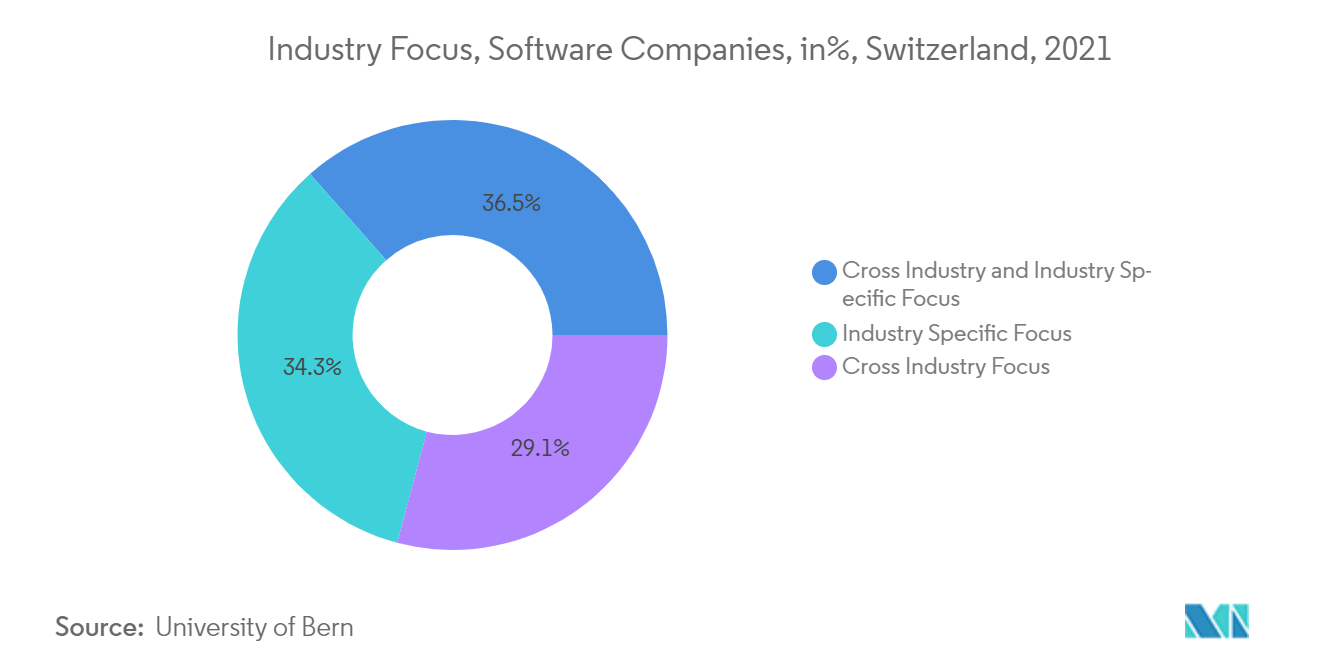
Identity Access Management is One of the Factor Driving the Market
- The rise in cloud services, social and mobile, has reduced the traditional firewall to increasingly outmoded. Digital identity has become crucial to enforcing access controls. As a result, identity and access management are expected to become a priority for modern enterprises.
- IAM, formerly considered an operational back-office issue, has acquired board-level awareness due to numerous high-level breaches brought on by organizations' ineffective management and control of user access. An expanding regulatory environment and trends like Bring Your Own Device (BYOD) and cloud usage have increased the importance of IAM. Additionally, there are now more dangers associated with data and information access.
- In addition to severe financial and possibly life losses, an identity-related cybersecurity breach by organized crime, state-sponsored military, and others can negatively impact staff morale and productivity and further harm the IT network and the business's reputation. Due to these dangers, a higher standard of identity and access control systems is required.
- The changing business processes brought millions of new devices into the network, demanding effective access management solutions to protect IP and sensitive data from breaches. In the past years, companies have been investing significantly in IAM solutions to perform the job that is out of sweep for humans since hackers and malicious employees are primarily unknown and can inflict massive damage inside an organization.
- As IAM centralizes authorization and authentication, it is a prime candidate to track all access securely for Blockchain platforms. This is often needed for compliance and helps the enterprise detect and prevent fraud. An audit trail entry is logged each time a user logs in or requests specific permissions in a particular context. These stolen and synthesized identities are significantly leveraged to attack the growing E-commerce market in the region and significant retail corporations. Another primary tactic in the region for monetizing the stolen identities is to create new fake accounts using free trials and resell these for profit.
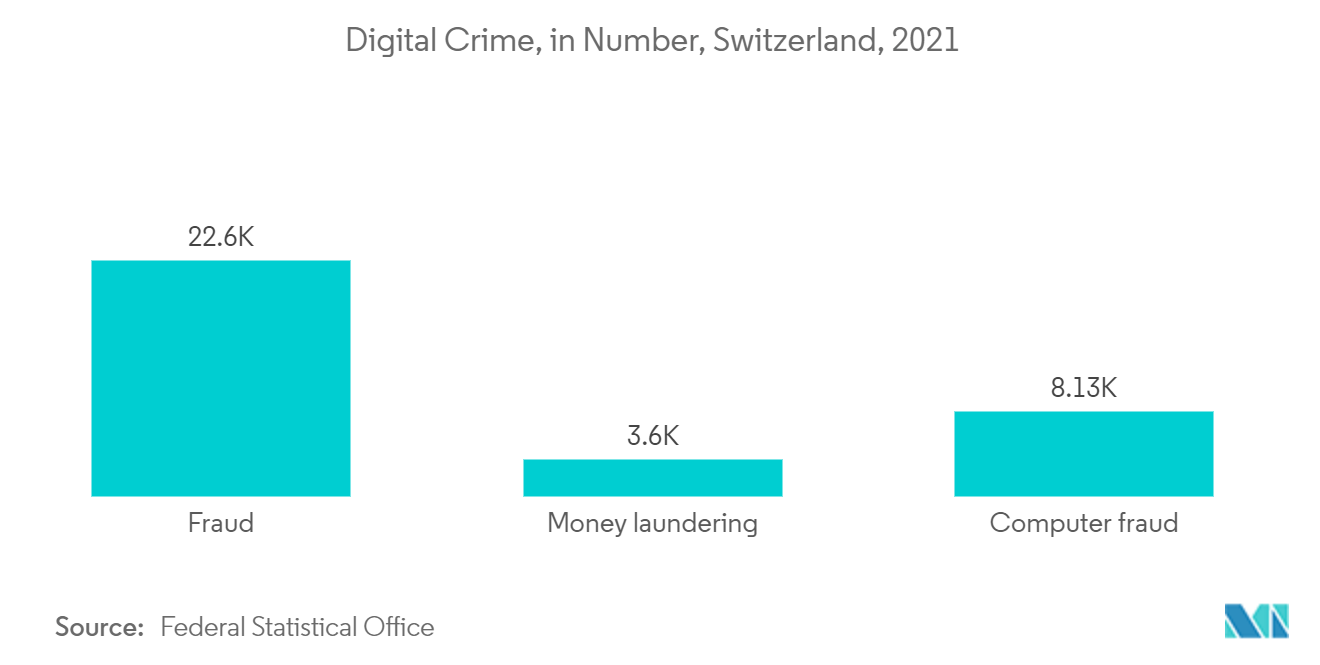
Switzerland Cybersecurity Industry Overview
The Switzerland cybersecurity market is moderately consolidated, with the presence of a few major companies. The companies continuously invest in strategic partnerships and product developments to gain market share. Some of the recent developments in the market are:
- May 2022: To test the MyShield all-in-one intruder prevention system in the Swiss market, Essence Group, a technology company that creates and distributes wireless, cloud-based security solutions for homes, families, and businesses, announced a partnership with Securitas Direct Switzerland, a top provider of security services.
- May 2022: The public cloud will start receiving applications and data in 2022, according to Zürcher Kantonalbank. The bank has selected Microsoft Switzerland as its initial cloud vendor. The change won't happen automatically; each application's merits will be considered to decide when the best moment is to implement it. The bank's top priority moving forward will continue to be security. The bank will not make any concessions in this regard since it places a high value on maintaining the confidentiality and integrity of crucial business data.
Switzerland Cybersecurity Market Leaders
-
Sophos Solutions
-
IBM Corporation
-
Oracle Corporation
-
Micro Focus
-
Juniper Networks
*Disclaimer: Major Players sorted in no particular order
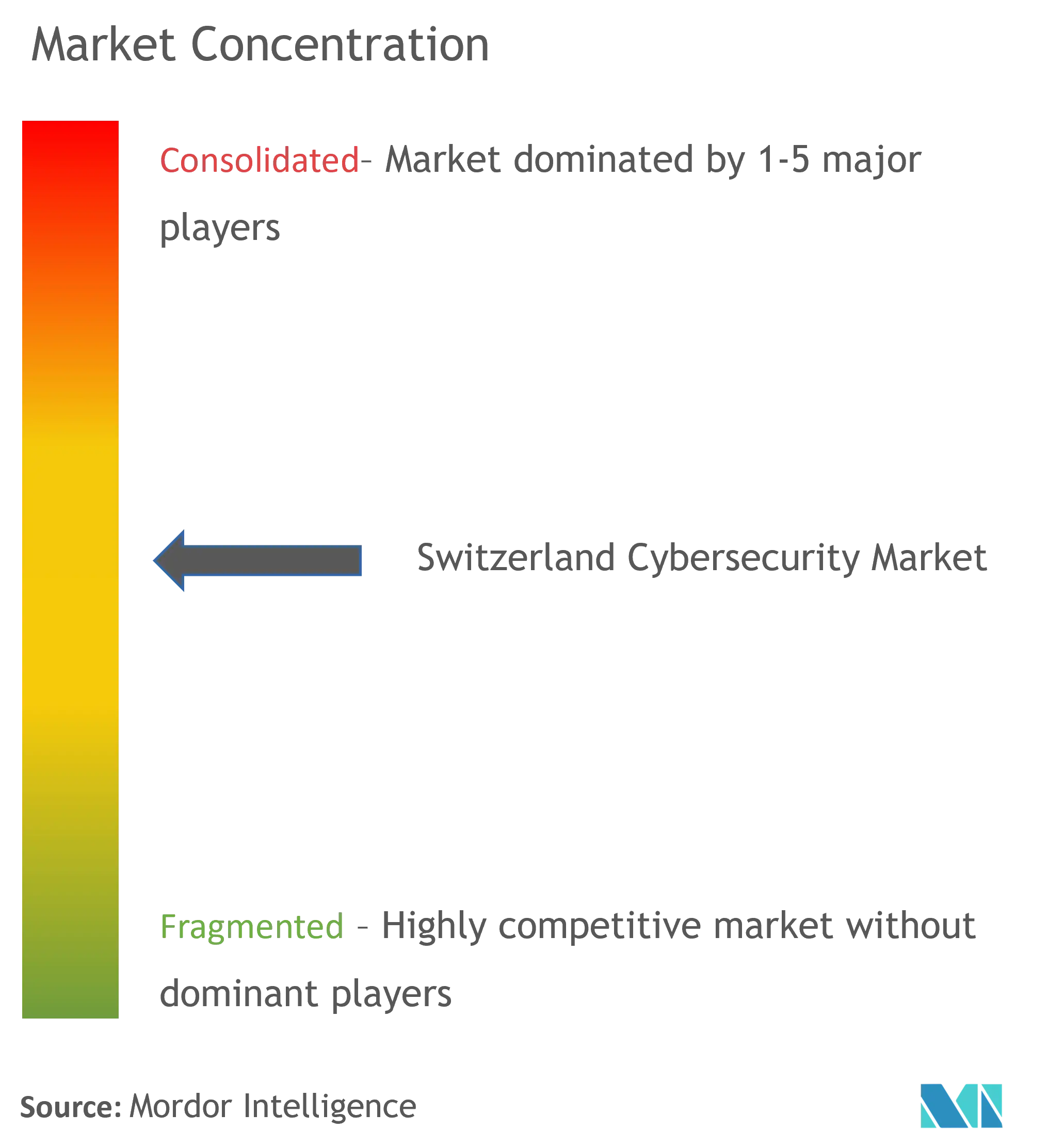
Switzerland Cybersecurity Market News
- April 2022: Adnovum is a software firm expanding into new sectors and industries, such as zero-trust security, by utilizing its identity, access management capabilities, and Swiss history. Adnovum relies on its Swiss heritage as it expands and diversifies its business into new markets. With experience working with Swiss financial institutions and the Swiss government, which have some of the strictest quality and security requirements in the world, Adnovum has a history of satisfying these clients' needs.
- August 2022: Omada A/S ("Omada"), a provider of Identity Governance and Administration (IGA) software, announced that BKW had chosen it and its strategic partner Securix to enable BKW to satisfy regulatory obligations and enhance identity and access management. With more than 11,000 employees, BKW is a European renewable energy enterprise. One of the largest Swiss power providers, it distributes electricity to around 1 million people in 400 towns in the Bern area of Switzerland.
Switzerland Cybersecurity Market Report - Table of Contents
1. INTRODUCTION
- 1.1 Study Assumptions and Market Definition
- 1.2 Scope of the Study
2. RESEARCH METHODOLOGY
3. EXECUTIVE SUMMARY
4. MARKET INSIGHTS
- 4.1 Market Overview
- 4.2 Value Chain Analysis
-
4.3 Porter's Five Forces Analysis
- 4.3.1 Threat of New Entrants
- 4.3.2 Bargaining Power of Buyers
- 4.3.3 Bargaining Power of Suppliers
- 4.3.4 Threat of Substitutes
- 4.3.5 Intensity of Competitive Rivalry
- 4.4 Impact of Covid-19 on the Market
5. MARKET DYNAMICS
-
5.1 Market Drivers
- 5.1.1 Increasing Demand for Digitalization and Scalable IT Infrastructure
- 5.1.2 Need to tackle risks from various trends such as third-party vendor risks, the evolution of MSSPs, and adoption of cloud-first strategy
-
5.2 Market Restraints
- 5.2.1 Lack of Cybersecurity Professionals
- 5.2.2 High Reliance on Traditional Authentication Methods and Low Preparedness
-
5.3 Trends Analysis
- 5.3.1 Organizations in Switzerland increasingly leveraging AI to enhance their cyber security strategy
- 5.3.2 Exponential growth to be witnessed in cloud security owing to shift toward cloud-based delivery model.
6. MARKET SEGMENTATION
-
6.1 By Offering
- 6.1.1 Security Type
- 6.1.2 Services
-
6.2 By Deployment
- 6.2.1 Cloud
- 6.2.2 On-premise
-
6.3 By End User
- 6.3.1 BFSI
- 6.3.2 Healthcare
- 6.3.3 Manufacturing
- 6.3.4 Government & Defense
- 6.3.5 IT and Telecommunication
- 6.3.6 Other End Users
7. COMPETITIVE LANDSCAPE
-
7.1 Company Profiles
- 7.1.1 Sophos Solutions
- 7.1.2 IBM Corporation
- 7.1.3 Oracle Corporation
- 7.1.4 Micro Focus
- 7.1.5 Juniper Networks
- 7.1.6 McAfee
- 7.1.7 Cisco Systems
- 7.1.8 AVG Technologies
- 7.1.9 Dell EMC
- 7.1.10 Fortinet
- *List Not Exhaustive
8. INVESTMENT ANALYSIS
9. FUTURE OF THE MARKET
** Subject To AvailablitySwitzerland Cybersecurity Industry Segmentation
Cybersecurity solutions enable an organization to monitor, detect, report, and counter cyber threats that are internet-based attempts to damage or disrupt information systems and hack critical information using spyware, malware, and phishing to maintain data confidentiality.
The Switzerland Cybersecurity Market is Segmented by Offering (Security Type, and Services), by Deployment (Cloud, On-Premise), and by End User (BFSI, Healthcare, Manufacturing, Government and Defense, IT and Telecommunication).
| By Offering | Security Type |
| Services | |
| By Deployment | Cloud |
| On-premise | |
| By End User | BFSI |
| Healthcare | |
| Manufacturing | |
| Government & Defense | |
| IT and Telecommunication | |
| Other End Users |
Switzerland Cybersecurity Market Research FAQs
What is the current Switzerland Cybersecurity Market size?
The Switzerland Cybersecurity Market is projected to register a CAGR of 5.60% during the forecast period (2024-2029)
Who are the key players in Switzerland Cybersecurity Market?
Sophos Solutions, IBM Corporation, Oracle Corporation, Micro Focus and Juniper Networks are the major companies operating in the Switzerland Cybersecurity Market.
What years does this Switzerland Cybersecurity Market cover?
The report covers the Switzerland Cybersecurity Market historical market size for years: 2019, 2020, 2021, 2022 and 2023. The report also forecasts the Switzerland Cybersecurity Market size for years: 2024, 2025, 2026, 2027, 2028 and 2029.
Warp Knitting Machine Industry Report
Statistics for the 2024 Warp Knitting Machine market share, size and revenue growth rate, created by Mordor Intelligence™ Industry Reports. Warp Knitting Machine analysis includes a market forecast outlook 2029 and historical overview. Get a sample of this industry analysis as a free report PDF download.



